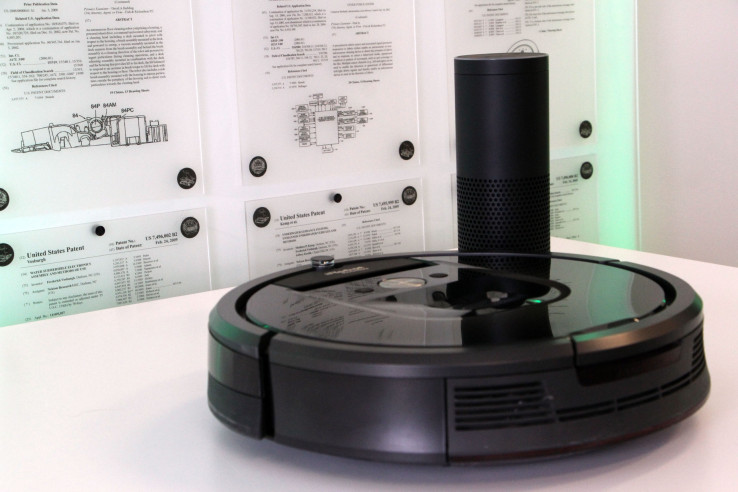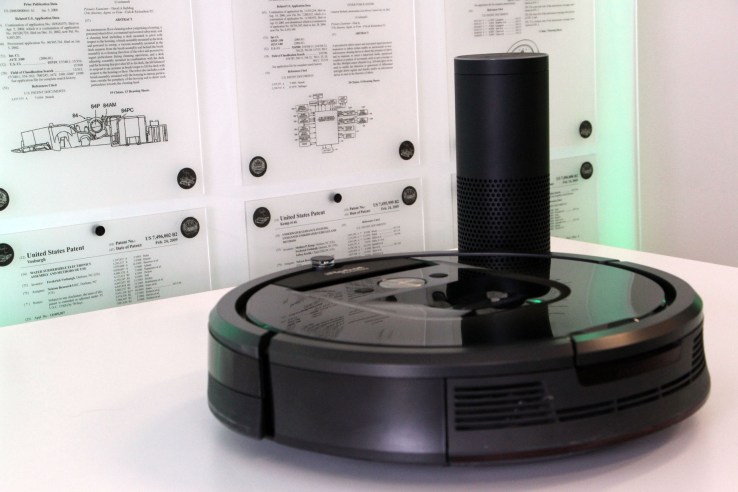

iRobot CEO Colin Angle has been repeating for some time now that the next step in the evolution of the company’s hit Roomba vacuum is becoming a connective tissue for the smart home. This morning’s announcement from the company takes it a couple of steps closer to that dream, introducing Alexa voice integration and advances to robotic vacuum’s mapping system that lay the groundwork for future smart home upgrades.
“Roombas are already becoming one of the commonly found connected devices in the home,” Angle tells TechCrunch. “The popularity of the Roomba has made it a very powerful ambassador for connected devices, but its ability to organize physical information in the home is making it a central player in allowing homes to be more intelligent. You need to be aware of where things are in order to have a home do the right thing without programming it.”
The company isn’t leaning too heavily on the Alexa integration at this stage, since it’s still a bit of a ways off, arriving at some point in Q2. But it will certainly be a handy feature for those with both an Echo and 900 connected series Roomba already in their home. We caught a demo of the functionality on a recent trip to the company’s Bedford, Massachusetts headquarters, and the whole setup was as user-friendly as one would hope, asking Alexa to tell Roomba to start cleaning and return to the docking station.
The more immediately available Clean Map function, on the other hands, leverages the 900’s navigational functionality to essentially make dirt map of a user’s home. The information takes a bit of the guesswork out of using a Roomba, showing the owner where the vacuum has cleaned and where it spent most of its time – a sort of heat map of a home’s dirtiest spots.
What’s perhaps most compelling here, however, is the groundwork that the company is laying out with these upgrades. iRobot’s push into strictly consumer devices has dovetailed nicely into the rise of the smart home, and the company is hoping that its widely deployed robot can serve as sort of a connected tissue, levering its WiFi connectivity and advanced computer mapping capabilities to make device a better way to lay out the home.
“The challenge right now with smart home and connected devices is that they’re too hard to use,” explains Angle. “There’s wonderful voice interfaces like the ones from Amazon and Google that allow you to talk to your home and have your home understand the words that you say. But if the house doesn’t know where the kitchen is, what’s the use in saying, ‘turn on the lights in the kitchen?’ You can program your light to be the kitchen light, but your average consumer doesn’t want to program. Typically there’s a really poor track record of wanting to program these things.”
Roomba’s daily mapping functionality could potentially serve as a sort of mobile hub to help connected home software understand what is located where and build actions based around that knowledge. Angle again, “The most important concept that I believe the home needs to understand is what is a room and what’s in that room? It doesn’t matter whether it’s high or low in that room. I want to very clearly say these lights, this television, this radio, these speakers, are in this room. If you think about how we live our lives, we move into a room and we want that room to be able to do something. When we leave the room, we’re happy if the room shuts down.”
It all seems a ways off, of course. Angle told us that he anticipates the true smart home connectivity play to arrive in “the single digit years.” But it is, at the very least, an interesting next step for a company that has spent much of the past decade and a half tweaking and perfecting its robot vacuum iteration by iteration.

